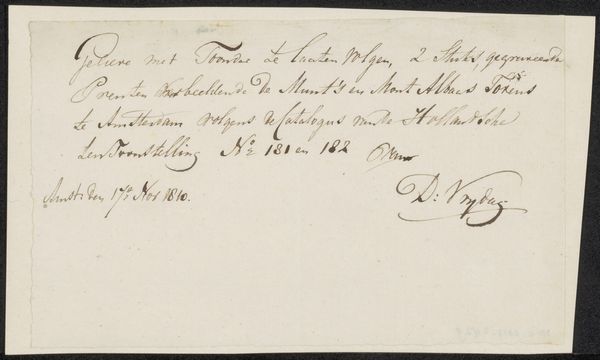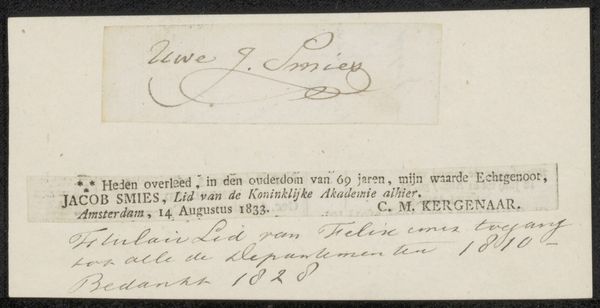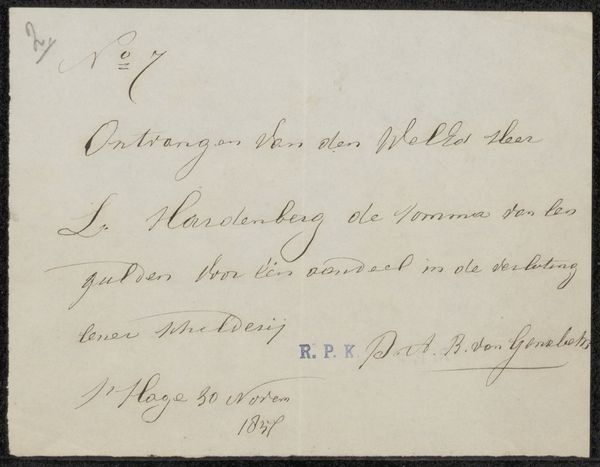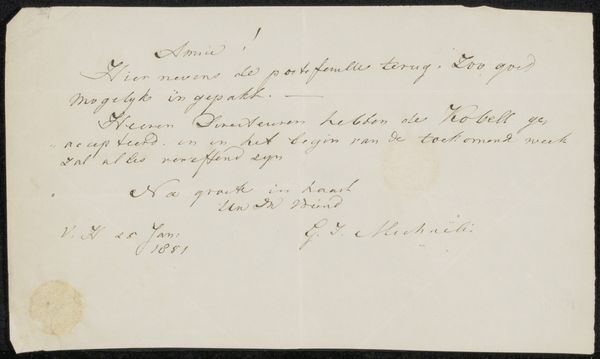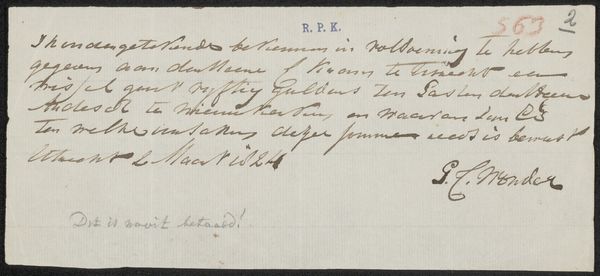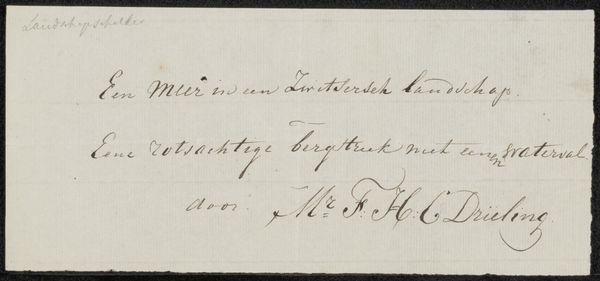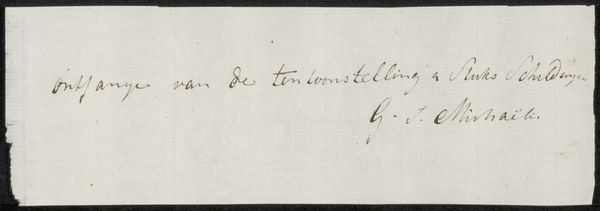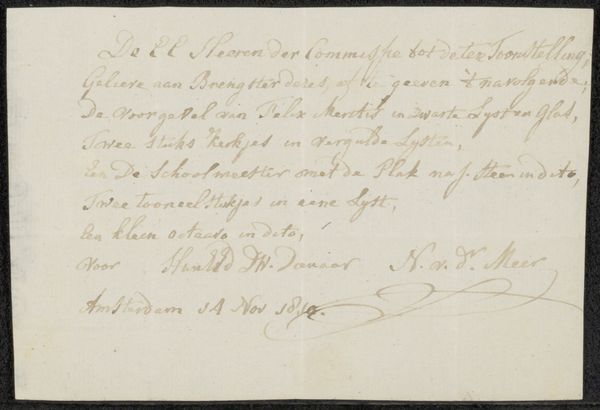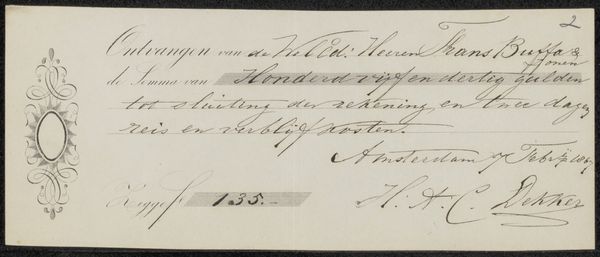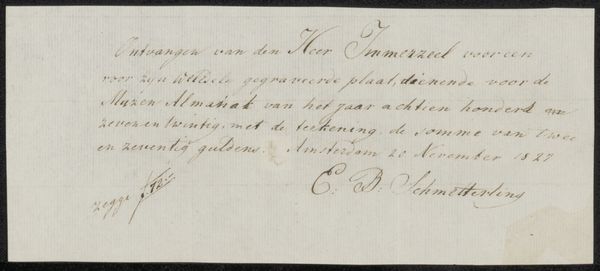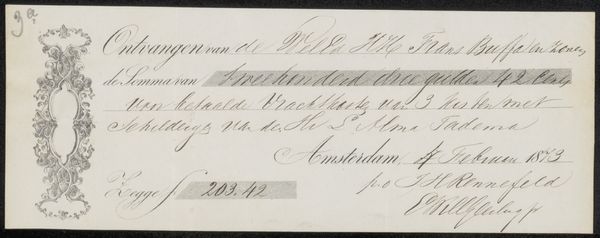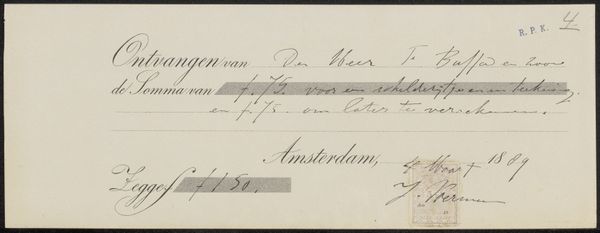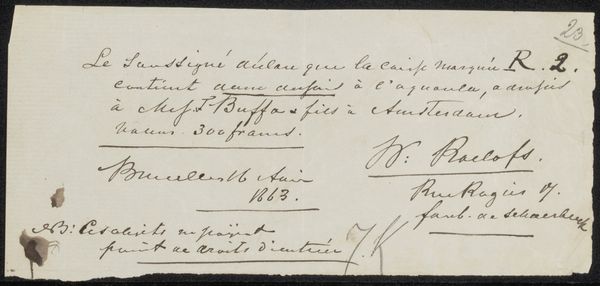
drawing, paper, ink
#
drawing
#
hand written
#
script typography
#
hand-lettering
#
hand drawn type
#
hand lettering
#
paper
#
personal sketchbook
#
ink
#
hand-drawn typeface
#
romanticism
#
thick font
#
typography style
#
miniature
#
calligraphy
#
small lettering
Copyright: Rijks Museum: Open Domain
Editor: Here we have “Brief aan anoniem” from 1810 by Jan Kamphuijsen, an ink drawing on paper. The script is so elegant; it's almost a miniature artwork in itself. I wonder what secrets are held in this little note. What strikes you when you look at this piece? Curator: What grabs my attention is precisely that physicality - the paper itself, the ink painstakingly applied. Think about the social context: What kind of paper was available? How was ink produced and distributed at the time? Who had access to these materials, and what did that signify about their social standing? Editor: That's a perspective I hadn't considered. So, beyond just the message, the very act of creating this letter had social implications? Curator: Precisely. Consider the labor involved, not just the act of writing but the production of the paper and the ink. Was the artist involved in any stage of this process? How might his understanding of the materials themselves impact his work? Was this made for commercial purposes, personal use, or for someone else? Editor: So, analyzing the materials opens up a whole new avenue of understanding beyond the surface of the image? Curator: Exactly! The materials are never neutral. They're products of specific times, places, and economies. Even something as seemingly simple as ink on paper can tell us about 19th-century social structures. What does the method of writing convey about skill and accessibility to the process of literacy? Editor: I'll never look at handwriting the same way again! Focusing on the "how" and "why" it was made makes me appreciate the labor and context. Curator: Indeed. Examining materiality encourages us to see beyond aesthetic value and understand art and text within the framework of broader systems of production and consumption.
Comments
No comments
Be the first to comment and join the conversation on the ultimate creative platform.
